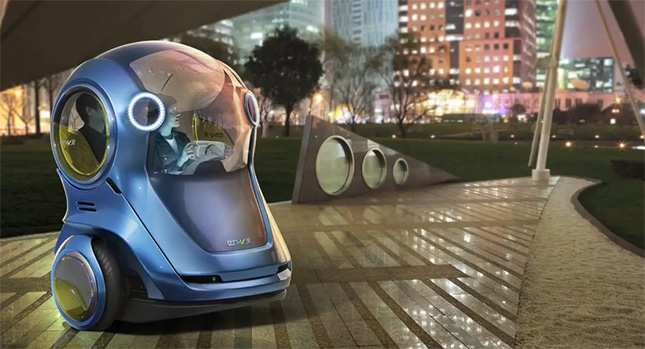At the 2010 Shanghai World Expo, General Motors (GM) unveiled a trio of two-wheeled neighborhood electric vehicles (NEVs) collectively named EN-V to the world.
Unlike the brand’s mainstream models, these concepts were lightweight and compact EVs for an as-of-yet unrealised city of the future. With a host of telematics and cameras to avoid other EN-Vs, pedestrians and other obstacles on the road coupled with a highly accurate GPS system, these concepts were theoretically accident-proof and self-driving.
Now a consortium from China and Singapore are drawing up plans for Tianjin Eco-City: a large-scale prototype for the sort of sustainable, high-density communities we’re expected to see in the coming decades.
Key features include a focus on renewable energy, mass transit (in the form of a light rail system) and – you guessed it – a development of GM’s EN-V.
It will be the first time GM’s innovative little concepts will be tested “in the wild” by real commuters, with around 10% of the city’s projected 350,000 strong population taking to the streets in EN-Vs.
Due to the nature of the EN-Vs design and construction, the “enclosed Segways” require special roads much like other NEVs and bicycles.
They also require a charging infrastructure that makes it difficult for the EN-Vs to be applied in existing cities; hence, the benefits of getting in early on in the planning stages of a new urban development like Tianjin Eco-City in China.
With some 60% of the Earth’s predicted 8 billion strong population expected to be living in crowded cities by 2030, GM wants to be on the forefront of such cutting-edge projects.
The appearance of megacities in countries like China and India are also driving the push toward cleaner, more inventive ways of personal mobility. Though the final vehicles won’t be identical to the 2010 concepts, they are expected to share certain similarities in design, layout and construction.
By Tristan Hankins
Via Fox Boston
VIDEO







